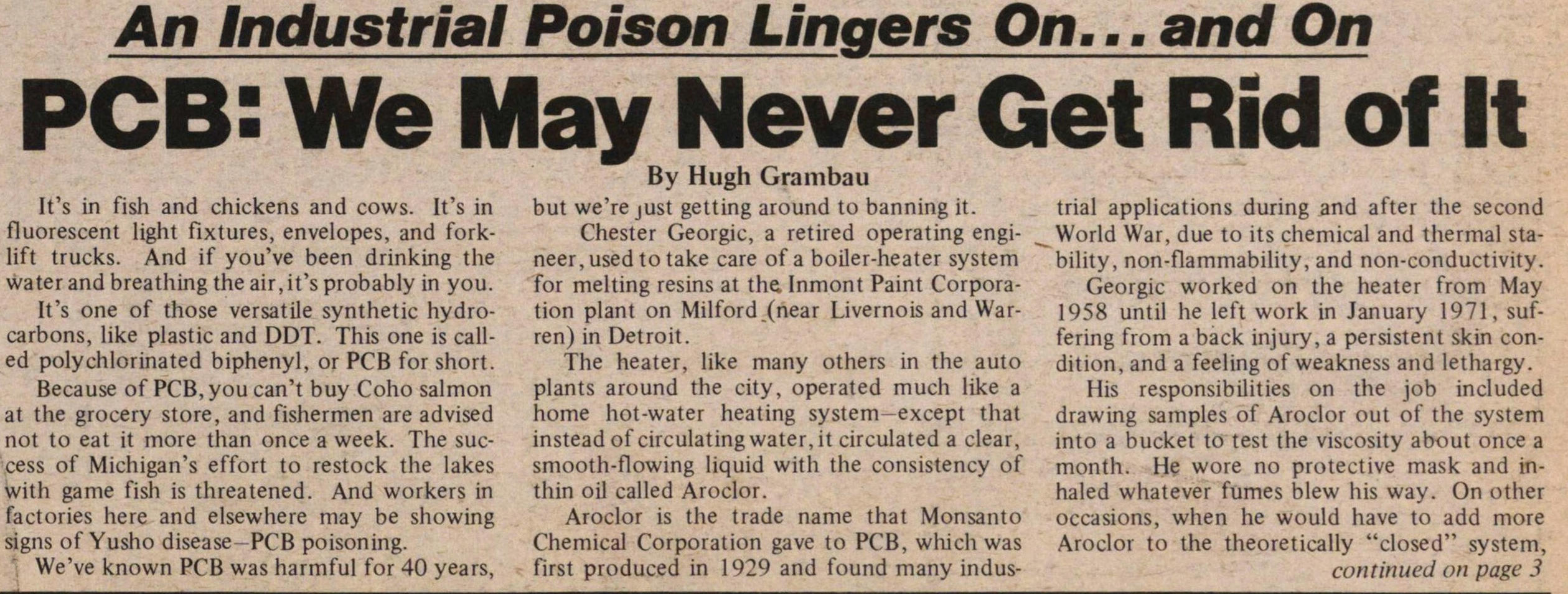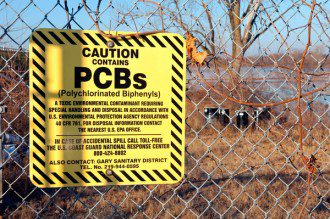Contributing Writer for Wake Up World
One of the most hated corporations on the planet, Monsanto is on the hot seat once again. This time, the city of San Jose in the United States is suing the biotech giant over waterway chemical pollution. According to the lawsuit, Monsanto knew for decades polychlorinated biphenyls (PCBs) are toxic to the environment and people — yet continued to manufacture and sell the chemicals regardless.
San Jose isn’t the only American city to hold Monsanto accountable for its corrupt ways — Spokane, Washington has recently filed a similar lawsuit. Part of an up and coming trend seen across the United States, communities are standing up to the corporation and making their voices heard.
[pro_ad_display_adzone id=”110028″]
A Highly Persistant Poison
Polychlorinated biphenyls are exceptionally harmful to the human body, wildlife and the environment. Linked with cancer — and dangerous to the immune, reproductive, nervous and endocrine systems — PCBs are so toxic that the U.S. banned the chemicals in 1979. Around the world, other countries have followed suit.
The commercial production of PCBs began in 1929 and about 2 million tonnes have been manufactured since that time. Approximately 10% of the chemicals still remain in the ecosystem today. PCBs were used in transformers, insulators, lubricants, plasticizers, inks, adhesives, flame-retardants, paints and duplicating paper. Today, landfill, old electrical equipment and the incineration of municipal waste are the leading causes of environmental contamination.
PCBs persist in the ecosystem due to their highly unreactive nature and as a result, are found in human blood, milk, fatty tissue, along with meat, fish and dairy products. Environmental samples of air, fresh and salt water, soil, sediment and solid waste all have shown varying levels of PCB contamination.
One American community in Anniston, Alabama is considered the most contaminated site in the United States. Residents are urged not to grow vegetables in the soil, kick up dirt, eat, chew gum or smoke cigarettes while working in the yard. Children cannot play on grass and a mask should be worn while mowing the lawn.
Anniston is also the town where PCBs were invented and manufactured by Monsanto for almost 40 years. The corporation dumped tonnes of raw PCBs directly into Snow Creek, which runs by the plant. Five thousand tonnes are buried in a hillside that many believe are still off-gassing toxins.
Yet, while all this was happening, the corporation had full knowledge that the chemical was exceedingly poisonous.
The Monsanto Profit Machine
Donald Stewart, an attorney and former U.S. Senator who lives in Anniston, investigated the contamination. According to CBS News:
“Stewart uncovered close to a million pages of company documents that show Monsanto knew PCBs were a problem as early as 1938 – when scientists hired by the company reported that rats exposed to the chemicals delivered liver damage. By the 1950s, Monsanto was urging its own workers to wear “proper protective clothing” and “respiratory equipment” when handling PCBs. Many of the documents dealing with PCBs or other pollutants were marked “Confidential: Read and Destroy.”
Moreover, “They were warned by the people who did those tests that they should warn their neighbors because children and animals might be affected by what was being released from their plant,” says Stewart.
“In 1969, Monsanto created a high level PCB Committee, whose mission was to “protect the image of the corporation” and “permit continued sales and profits.”
“Even they [Monsanto] concluded that PCBs will someday become “a global environmental contaminant.” But no one let the community know the extent of the problem and little was said about it in the press.”
As of 2002, Monsanto settled multiple lawsuits filed by the city and community members, paying $700 million total — with $600 million to residents and the remaining $100 million to clean-up the contamination.
Jump to the present day and comparable lawsuits are plaguing the corporation — notably from the cities of Spokane, Washington and San Jose, California.

Article from Michigan’s Ann Arbor Sun date March 1976: “An Industrial Poison Lingers On… And On” (You can read the entire article here.)
Seeking Justice for the Environment, Wildlife and Human Health
In August of this year, the city of Spokane filed a lawsuit against Monsanto, blaming the agrochemical giant for PCB contamination in the Spokane River. The city alleges that the company sold the chemicals for decades, even though they were aware of the toxic environmental and health impacts.
The lawsuit comes at a time when cities and counties are facing more stringent environmental regulations. Marlene Feist, the city’s utilities spokeswoman, said Spokane will ultimately spend $300 million to keep PCBs and other contaminants from gaining access to the river.
Apparently, by suing Monsanto, the city will force the corporation to be responsible for its toxic deception concerning the chemical it misrepresented.
The city of San Jose has also has taken legal action against Monsanto and two of its subsidiaries over PCB pollution in the San Francisco Bay. The city believes the companies are liable for contaminating the bay with PCBs under the trade name Aroclor, which was manufactured and sold from the 1930s to 1970s.
In the lawsuit, San Jose claims Monsanto knew at the time the chemicals harmed people and the environment. As with the legal battle in Anniston, Alabama, the attorneys representing San Jose quote internal documents which clearly show Monsanto had full knowledge of the toxicity linked with Aroclor. The complaint also states the corporation lied to government regulators, asserting the chemicals were non-toxic and wouldn’t affect the ecosystem.
Does the above claim sound familiar? It’s exactly what Monsanto says about their contemporary chemical, Roundup Ready — despite overwhelming evidence to the contrary.
Here’s a final bit of food for thought regarding Monsanto’s poor environmental track record. San Jose Inside reports:
“No company should be allowed to contaminate the environment and rely upon taxpayers to clean up the mess,” attorney Scott Summy, a shareholder at Baron & Budd, P.C., said in a statement. “Monsanto, one of the most sophisticated chemical companies in the world, knew decades ago that PCBs were a significant contamination threat. And yet the company was concerned more with continuing profits than with protecting the public.”
Hit the Biotech Industry Where It Hurts: Their Pocketbook
In an era where big money is tossed around by biotech and pesticide behemoths like Monsanto, Syngenta, Dow, DuPont and others to defeat laws restricting their dirty practices, if we truly want to defend our environment, our food supply and health, one of the single most effective tactics is to undermine their profits by voting with our dollars. Lawsuits aside, this kind of activism is also beginning to bear fruit. Earlier this year, Monsanto reported a sharp decline in first quarter earnings, down 34% to $243 million for net profit, while total sales fell by 8%.
Article sources:
- www.sanjoseinside.com/2015/08/06/san-jose-sues-monsanto-over-pollution-in-san-francisco-bay
- www.seattletimes.com/seattle-news/spokane-sues-monsanto-over-spokane-river-contamination
- www3.epa.gov/epawaste/hazard/tsd/pcbs/pubs/effects.htm
- www.greenfacts.org/en/pcbs/l-2/1-polychlorinated-biphenyls.htm
- www.cbsnews.com/news/toxic-secret-07-11-2002
- www.seattletimes.com/seattle-news/spokane-sues-monsanto-over-spokane-river-contamination
- www.spokesman.com/stories/2015/aug/03/spokane-sues-monsanto-pcb-contamination
- www.sanjoseinside.com/2015/08/06/san-jose-sues-monsanto-over-pollution-in-san-francisco-bay
- www.media.aadl.org/documents/pdf/aa_sun/aa_sun_19760325.pdf
Previous articles by Carolanne Wright:
- Dr Sebi: The Man Who Cures Aids, Cancer, Diabetes and More
- Plastic-Eating Mushroom Discovered in the Amazon Rainforest — A Solution for Our Trash Saturated World?
- Chronic Lyme Disease: A Modern Plague the Government Chooses to Ignore
- Big Pharma and Organized Crime — They are More Similar Than You May Think
- Over 100 Scientific Studies Agree: Cannabis Annihilates Cancer
- Emotional Energetic Healing: The Future of Medicine is Here
- Why Every Parent Should Consider Unschooling
- The Greenhouse of the Future: Grow Your Own Food Year-Round With This Revolutionary System
- First U.S. City Produces More Electricity Than It Uses — With 100% Renewable Technology
- Autistic Boy with Higher IQ Than Einstein Discovers Gift After Removal from State-Run Therapy
- Enhance Spiritual, Mental and Physical Well-being with a Pineal Gland Detox
[pro_ad_display_adzone id=”110025″]
[pro_ad_display_adzone id=”110027″]







